Cassia Tree Care – How To Grow And Care For Golden Shower Trees
When you feel like your garden is missing something, the cassia tree might just be that missing piece of the puzzle. Both as a focal point and as a shade tree, the cassia is a multipurpose tree that brightens the landscape with its yellow blooms. Unlike other deciduous trees, some varieties of the cassia tree bloom both in the spring and fall. Even more, some cultivars are evergreen which might be just what you need to solve your chronic landscaping problems.
It’s no hyperbole when we say that this delightful tree literally showers your garden with its abundance of yellow flowers. This might explain why the tree is sometimes called the golden shower tree. The edible flowers are a favorite delicacy in some parts of Asia where the tree originally comes from. That’s not to say that you’ll grow the tree to snack on cassia flowers twice a year. It’s just one of the many benefits of this tree.
If you fancy yellow blooms brightening your landscape two seasons out of four every year, read on to find more about the delightful cassia tree.
Cassia Tree at a Glance
A native of the tropics, the cassia tree has been part of many cultures where it was, and remains, a good source of food and medicine. The tree goes by many names including the golden shower, the pudding-pipe tree, Indian laburnum, and purging cassia among others.
The tree can be deciduous, semi-deciduous, or full-blown evergreen. It all depends on the variety or cultivar you grow and the growing conditions. The medium-sized tree usually grows to decent heights between 30 to 45 feet high. That’s not really a giant of a tree and doesn’t require special arrangements regarding the location and space in your garden. You can practically plant it in a side yard or a tiny backyard.
The cassia tree grows on a straight trunk that spreads at the top into a spectacular open crown. The leaves of the tree are deep green and grow to about 12 inches long. The broad leaves create a dense canopy that offers plenty of shade in the summer months.
But of course, it’s the showy flowers that get all the attention. In the spring, clusters of cheerful yellow flowers open up and brighten the landscape. Each flower is only a couple of inches in diameter but since there are so many of them, they practically light up the place.
Cassia Tree Landscaping Ideas
As we mentioned, people in the tropics have been eating the yellow flowers of the cassia tree and using them in traditional medicine for millennia. But that’s not the main reason why you’d want to grow this tree. Rather than eat its flowers, the main value of the cassia tree in the modern garden is purely ornamental. Here are some designing ideas to turn your landscape around with the help of the golden shower tree.
- The cassia tree is at its most ornamental around the patio or near the pool.
- If you have a circular driveway, the cassia will accent the landscape.
- For garden beds, plant this tree as an anchor.
- Frame the entryway with the green and overarching crown of the tree.
- Plant it near pillars and similar structures to cut down on the straight lines and rigid angles.
- Next to a fence or a blank wall, the tree changes the dynamics of the landscape.
- Add variety to a row of tall trees and add color to a border lined up by palm trees.
Cassia Tree Varieties
Cassia trees come in many shapes and varieties. Some are purely deciduous and bloom once a year. Others are fully evergreen and bear flowers in the spring and the fall. Here are some of the most popular cassia varieties to grow in your garden.
- Desert Cassia (Senna polyphylla): A small variety that doesn’t exceed 10 feet on a good day. But don’t let its small size put you off, this compact tree blooms twice a year in the fall and spring. Not only that, but it’s an evergreen tree so it remains lush green all year round. Best grown in zone 9, it is cold hardy, and has a high tolerance for salty soil as well.
- Cassia surattensis: Slightly taller than the dessert cassia, this variety reaches about 15 feet at most. This evergreen tree also blooms twice a year and keeps its bright green foliage as long as the weather doesn’t turn bitterly cold. It grows well in zone 10 although it can tolerate zone 9 as long as the weather is warm. It might shed some leaves in the winter.
- Cassia fistula: Although semi-deciduous and has less tolerance to cold temperatures than the other two varieties above, this cassia has clusters of yellow flowers that cascade over the canopy and almost hide the green foliage behind. It grows in zone 10 as long as you plant in a sheltered spot away from the wind. On average, this variety grows to about 30 feet and has a fast growth rate.
If you live in the right zone and you have enough space, I recommend you grow the cassia fistula or golden shower tree. But for those living outside of zone 10, and have small gardens, then the desert cassia would be the ideal choice.
How to Grow A Cassia Tree
To grow the cassia tree in your garden you’ll need to get your hands on some seeds. Thanks to the tree’s fast growth rate, it doesn’t take long for the seeds to germinate and the tree to spread its cheery glamor all over the place. Here’s how to start the cassia tree from seeds in easy steps.
- Around the fall, the pods carrying cassia seeds become ripe. Collect a few pods to harvest the seeds inside.
- Spread the seeds on a paper towel to dry then place them in a plastic bag, seal it, and keep it in the fridge until it’s time to plant the seeds.
- In the winter, you can start the seeds. Take them out of the fridge and use a sharp knife to punch a hole in the coat of each seed. Soak the seeds in warm water overnight.
- Fill a shallow container with plenty of drainage holes with a potting mix. Water it until it becomes moist.
- Plant the seeds in the potting mix about 2 inches deep and cover them. Cover the container with a plastic sheet to maintain the temperature of the soil.
- Place the container in a bright area that gets sunlight and make sure the soil temperature doesn’t drop below 75 degrees Fahrenheit.
- Once the seeds germinate, you can remove the plastic cover but make sure the soil remains moist.
- When the seedlings are about 2 inches high, you can plant each seedling in its own pot. Use the same peat potting mix and keep it moist.
- As soon as the sapling is about 4 inches high, take the container outdoors to harden the seedlings. Gradually increase the time the sapling is exposed to sunlight.
- In early spring, you can plant the cassia sapling in the garden. Pick a spot that gets about 6 hours of sunlight every day and transplant the tree.
- Dig a hole in the loamy soil as deep as the root ball of the sapling and twice as wide.
- Ease the sapling out of the pot and inspect the roots. Lower it in the hole and align the soil mark on the stem with the surface of the hole.
- Fill the hole with soil and pack it to chase out air pockets and ensure the sapling is standing on its own.
- Water the soil to get it moist but don’t overwater it.
Cassia Tree Care
Admittedly starting the cassia tree from seeds is a lot of work, but this delightful tree is well worth the trouble. The tree doesn’t waste time growing tall and spreading its lush green foliage and shade over the garden.
Sunlight
More than a specific type of soil or some quirky watering habits, the cassia tree requires first and foremost, sunlight. On average the tree should get about 6 hours of sunlight every single day. The evergreen tree needs an abundance of sunlight to maintain the lush green foliage and keep blooming twice a year. But more than that, the sun also keeps those broad leaves on the tree all year round. If the temperature drops or the tree doesn’t get enough sunlight for a prolonged period of time, it would start shedding its leaves. So avoid planting the tree in partial shade or next to a taller tree that casts its shadow on the cassia.
Water
The cassia tree needs about 2 inches of water a week. This amount could go up in the summer if the weather becomes too hot for the soil to stay moist. On average you will need to water the tree about once a week. You should wait for the topsoil to dry up before you water it again. However, this tree is not drought hardy, so don’t if you notice the soil getting dry too fast, increase your irrigation frequency to twice a week.
Mulching
To help you maintain the moisture in the soil, we recommend that you use mulching. Any organic materials such as fallen leaves, shredded oak bark, or pine needles would do well as mulching. Spread about 2 inches of the material around the base of the tree every fall. Make sure the mulching doesn’t come in contact with the bark to avoid fungal diseases. When the layer of mulch goes thin, you should replenish it about once a year.
Pests and Diseases
The cassia tree attracts pests just like many other trees. For the most part, you’ll be fending off mildly serious pests such as aphids and whiteflies. These are usually easy to get rid of with a regular garden hose. If the infestation is too heavy, consider using neem oil on the leaves and branches. This might require a ladder for a mature tree.
As for diseases, the cassia tree isn’t prone to any major diseases that could impact its growth or diminish its glamorous foliage. The only problem the tree might suffer from is root rot. That’s a man-made issue caused by overwatering the soil or planting the tree in poorly drained soil. Keep the soil moist but not wet. The cassia tree doesn’t like to get its feet wet.
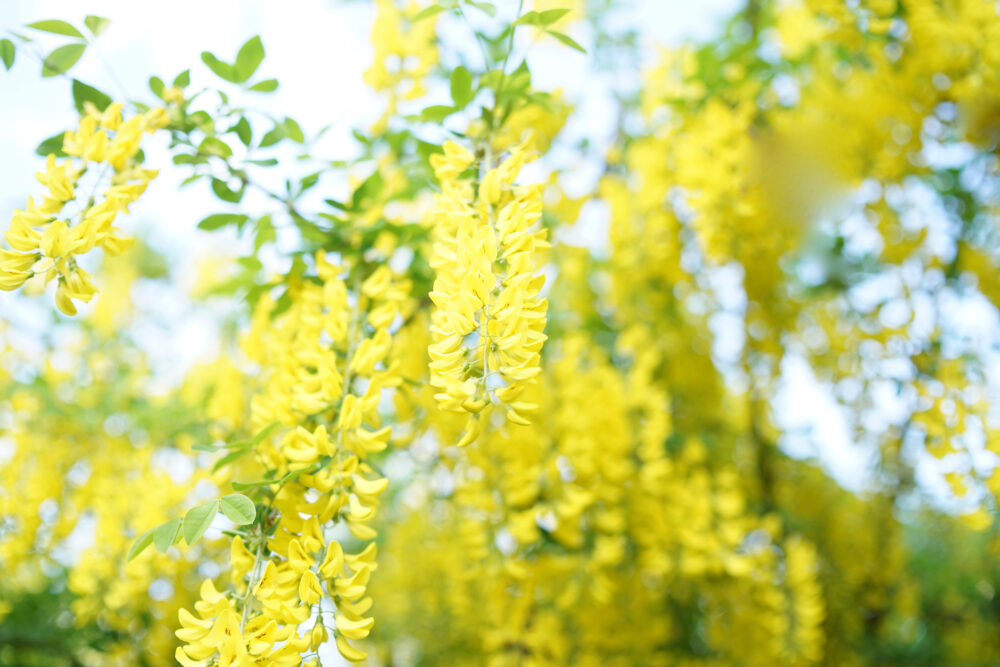
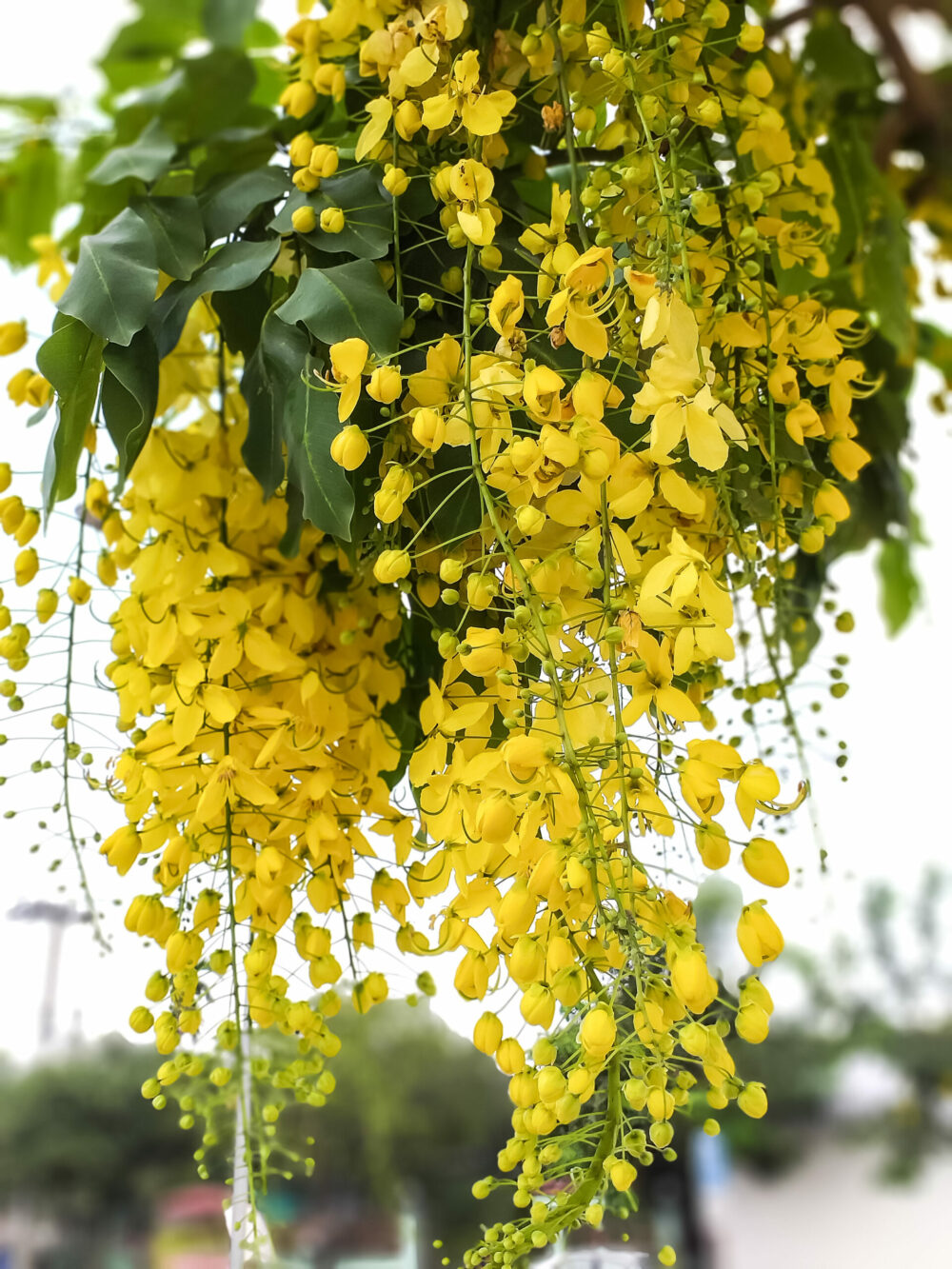
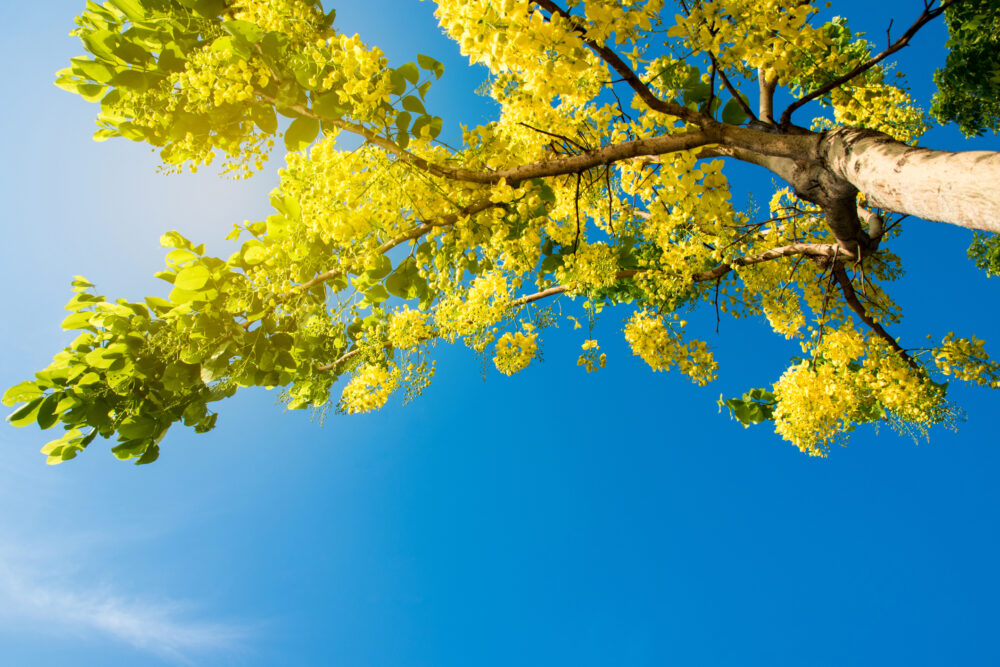
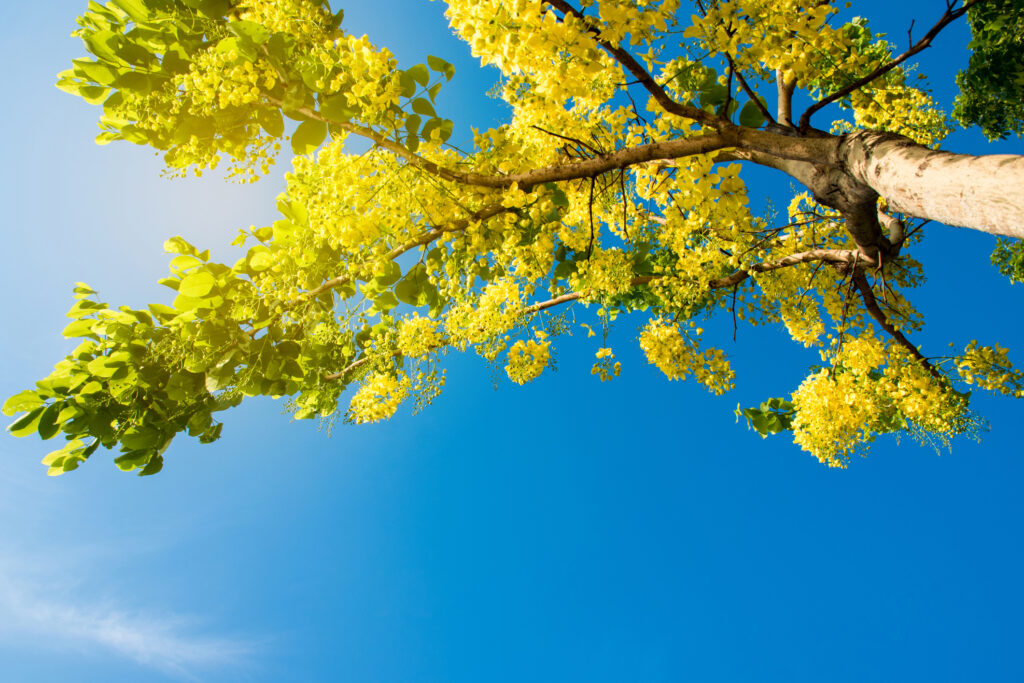
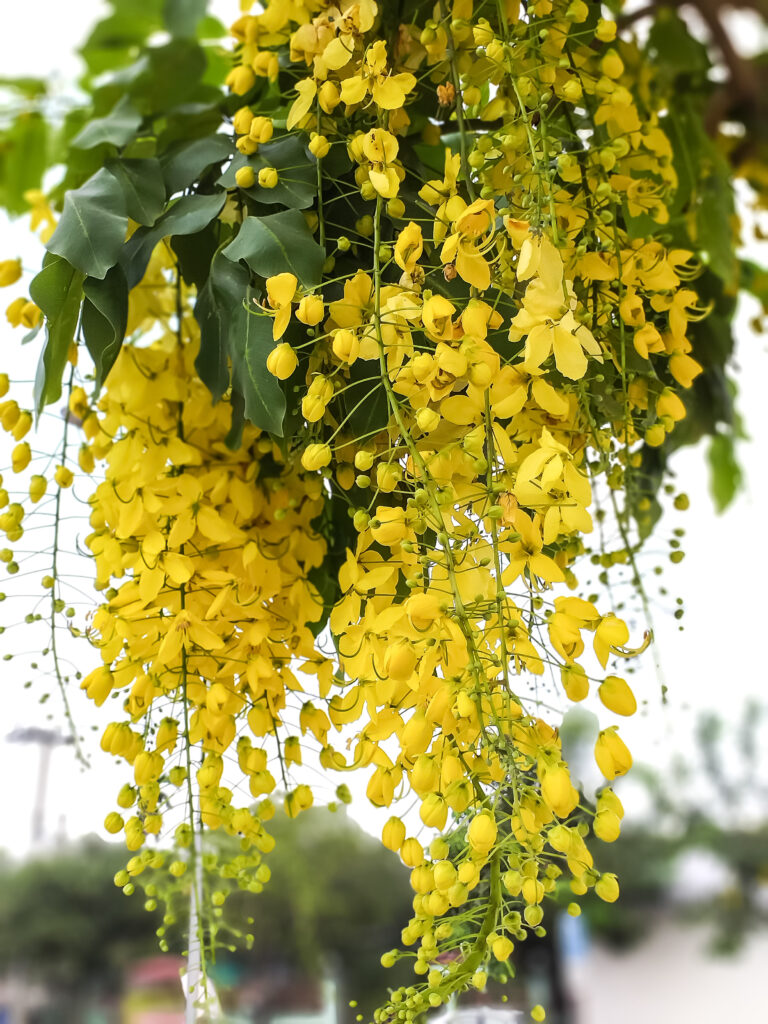
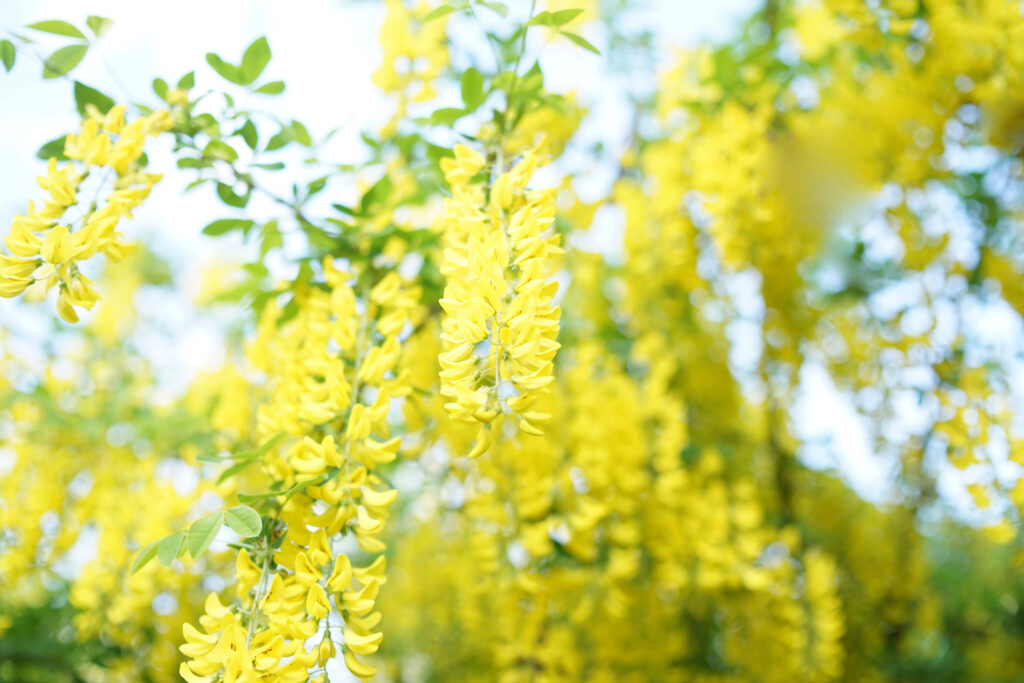
Good article. Very informative ! I have a cassia plant that has grown in a 12″ pot in my balcony. Within 7-8 months it has grown to be an 8 feet tall thin tree and has starting flowering on the top. Even a pod is there right in the middle. I want to grow it as a thick shrub not taller than 7-8 feet. What do I need to do. Should I cut the upper growing end to stop further vertical growth and stimulate horizontal growth in the form of branches ? Kindly advise.